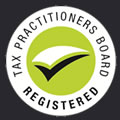2 June 2017
The general rule is that you can claim deductions for expenses your business incurs in its task of generating assessable income. Many of these deductions are obvious – rent, materials, supplies and so on — but there are also some less obvious options left available just before the end of the income year, should your circumstances suit, to further reduce your enterprise’s tax burden for the year.
Continue reading “End-of-year tax planning tips for business”




